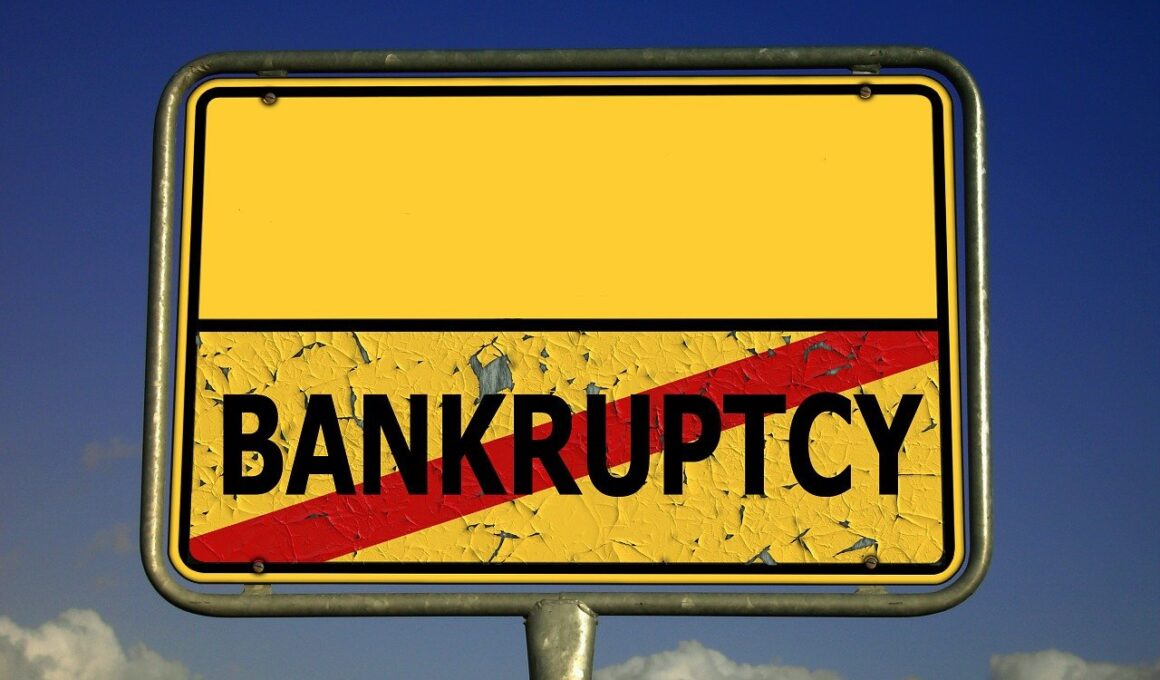The Future of Corporate Bankruptcy Law: Trends and Predictions
Corporate bankruptcy law is constantly evolving in response to economic changes and societal needs. With the rising complexities of global business practices, lawyers, legislators, and stakeholders must pay close attention to emerging trends shaping the future of this field. A significant trend includes the increased use of technology in bankruptcy proceedings. Automation streamlines processes and significantly reduces costs for both debtors and creditors. Additionally, artificial intelligence tools predict outcomes and assist legal teams with document management. Another trend is the focus on alternative dispute resolution (ADR) methods. Emphasizing negotiation and mediation helps resolve disputes outside of court. This results in faster outcomes, preserving business relationships, and reducing the burden on overburdened courts. The complexity of corporate structures often leads to lengthy cases, making ADR an appealing alternative. Moreover, ESG (environmental, social, and governance) factors are becoming more central to corporate restructuring plans. Stakeholders increasingly prioritize ethical considerations, leading to a more holistic approach in determining the viability of restructured organizations. Understanding these trends provides insights into the future direction of corporate bankruptcy law and helps stakeholders navigate challenging complexities.
As corporate bankruptcy law evolves, sustainability is set to play a pivotal role. Businesses are recognizing the significance of environmentally conscious practices during reorganization. Sustainable restructuring can contribute positively to the company’s image and stakeholder relationships. This rise of sustainability correlates with broader societal movements advocating for responsible corporate behavior. Companies now face not only financial scrutiny but also public and environmental accountability. Shareholders demand transparency regarding how companies mitigate their environmental impact. Additionally, the role of creditors is shifting, as financial institutions adopt greener criteria in their evaluations of bankruptcy cases. Both debtors and creditors are compelled to align their values with sustainability, fostering a new norm in corporate governance. Furthermore, legislative changes and judicial interpretations will likely clarify the incorporation of ESG criteria into bankruptcy proceedings. Courts are beginning to interpret obligations to consider environmental impact when assessing reorganization plans. This trend indicates a significant shift in how businesses and legal professionals will approach corporate bankruptcy and sustainability going forward. Adopting sustainable practices not only influences a business’s financial prospects but also establishes a precedent for corporate responsibility in time of financial distress.
The Impact of Globalization on Bankruptcy Proceedings
Globalization has significantly impacted corporate bankruptcy law, introducing both challenges and opportunities for organizations. As businesses expand beyond borders, they face increased risks related to foreign markets, fluctuating currencies, and varying legal frameworks. Alongside these complexities, multinational corporations often find themselves entangled in numerous jurisdictions when managing their debt obligations. This multifaceted environment increases the importance of cross-border insolvency laws, which facilitate international cooperation among judicial authorities. Countries are increasingly adopting the UNCITRAL Model Law on Cross-Border Insolvency as a foundational framework to handle insolvency cases across jurisdictions. The sharing of information and collaborative strategies between different legal systems can enhance the efficiency of bankruptcy proceedings and safeguarding creditor rights. Furthermore, international credit markets and collaborative restructuring processes allow for more favorable outcomes for distressed foreign operations. With globalization comes an enhanced emphasis on uniformity in legal practices, pushing toward harmonizing laws to protect creditors while enabling companies to recover. Businesses, investors, and legal professionals must navigate this complex landscape to maximize the potential for successful restructuring and articulation of optimal recovery plans in an interconnected world.
Predicting future trends within corporate bankruptcy law necessitates consideration of the current economic landscape. As economies fluctuate in response to global events, companies will react accordingly, which may lead to increased bankruptcy filings. Areas such as retail and energy are notably sensitive to changes, creating unique challenges for firms in these sectors. Legislators may respond by introducing new regulations or amending existing laws to adapt to evolving market conditions, ensuring these rules remain relevant and effective. Special attention must be given to small and medium-sized enterprises (SMEs), which are vital to every economy. Recent trends indicate that insolvency frameworks are increasingly favoring the retention and recovery of SMEs. Policymakers recognize their importance as job creators and drivers of economic growth, and consequently, restructuring options are expanding and becoming more accessible. In addition, creative solutions such as pre-packaged bankruptcy plans are gaining traction. This approach allows distressed companies to negotiate with creditors about restructuring before formally filing for bankruptcy, helping minimize disruptions and, ultimately, preserving value. Understanding these dynamics will aid businesses and legal professionals to prepare for and successfully navigate impending changes in corporate bankruptcy law.
Reforming Bankruptcy Laws for Better Outcomes
Bankruptcy law reforms are essential in shaping the future landscape of corporate insolvency. Stakeholders continually advocate for changes that prioritize efficiency, equitable treatment of creditors, and improved rehabilitation prospects for debtors. Entities participating in the bankruptcy process increasingly justify the move toward a more simplified legal framework, seeking to streamline proceedings and reduce costs for all involved parties. Analysts suggest that lawmakers should enhance accessibility to information regarding options available to distressed businesses. Successful restructuring initiatives must also address the unique challenges faced within various industries, as one-size-fits-all solutions are insufficient. Efforts to reformulate bankruptcy laws must embrace innovative approaches, including the use of technology. Enhanced transparency through accessible digital platforms can promote the efficient communication of pertinent data among stakeholders, decreasing misunderstandings and potential conflicts. Moreover, integrating risk assessment protocols into legal frameworks could help organizations better mitigate potential failures before they escalate into bankruptcy. Such reforms would serve to create a more resilient environment, enabling debtors to recover more quickly while ensuring fair resolution for creditors. Engaging legal professionals, policymakers, and business leaders in the discussion of these reforms will be crucial to shaping a balanced approach going forward.
In responding to the challenges faced by distressed corporations, collaboration among various stakeholders is becoming increasingly vital. The relationship between debtors and creditors is often symbolic of a larger ecosystem within the corporate world. As such, communication between affected parties can play a crucial role in guiding outcomes in bankruptcy cases. Establishing a collaborative approach may yield benefits by fostering open dialogue and understanding, assisting in the negotiations necessary for a successful turnaround or restructuring. Additionally, developing partnerships with financial institutions can facilitate improved access to resources, promoting stability for businesses seeking recovery. Stakeholders must recognize that they share a vested interest in the success of businesses, as this often impacts their own financial health. Both parties should be willing to compromise and work toward mutually beneficial solutions during the bankruptcy process. Creating networks that build relationships and share insights among industry players, legal professionals, and academic researchers can further enhance understanding of the intricacies of corporate bankruptcy law. Embracing teamwork will be crucial in navigating the future of corporate bankruptcy and creating a more adaptive framework serving all interests.
Looking Ahead: The Future of Corporate Bankruptcy Law
As we contemplate the future of corporate bankruptcy law, several factors will undeniably influence its trajectory. The continuous integration of technology and evolving economic norms signal a need for legal frameworks that are responsive to contemporary realities. Additionally, heightened awareness of social responsibility is likely to shape bankruptcy approaches moving forward. Corporate governance will increasingly demand ethical practices from companies, establishing accountability in times of financial distress. Stakeholders should prepare for debates surrounding the fair treatment of creditors versus the support of struggling debtors. As issues of equity permeate the future of bankruptcy, policymakers will need to consider the implications of preferential treatment on enforcement actions against companies. Furthermore, the embrace of diversity and inclusivity in bankruptcy management will help create a more just environment, ensuring all voices are represented. Legal professionals must stay informed about emerging trends and seek opportunities for continued education. By proactively adapting to the shifting landscape, the corporate bankruptcy sector will enhance its overall effectiveness in achieving just outcomes in demanding scenarios, setting a solid foundation for sustainable corporate practices.
Amidst the impending changes within corporate bankruptcy law, the roles of practitioners will evolve, necessitating adaptability and awareness of new practices. Lawyers will need to embrace technology, not just to streamline processes, but also as learning tools that enhance their legal acumen. They will increasingly utilize digital platforms for research, communication, and case management. Furthermore, interdisciplinary collaboration will become the norm. Bankruptcy professionals will work more closely with financial experts, business strategists, and environmental consultants to create holistic solutions for distressed firms. Such cooperation will yield more comprehensive strategies that consider the intricate challenges facing modern organizations. Additionally, mentorship and knowledge-sharing among legal professionals will foster a culture of continuous learning, helping firms to stay abreast of industry developments. As corporate bankruptcy law continues to adapt to changing socio-economic conditions, professionals’ risk management capabilities will become paramount. Firms must develop analytical expertise to assess risks proactively, ensuring that clients receive optimal advice. Emphasizing ethical standards and accountability in bankruptcy practices will solidify the public’s trust in the legal profession. Overall, the future of corporate bankruptcy law will reflect an ecosystem characterized by innovation, collaboration, and a dedication to achieving just resolutions.


